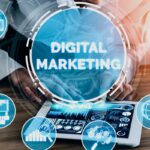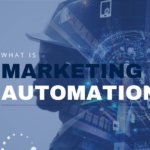Do you find your marketing efforts falling short? Are you struggling to connect with potential customers? The key to overcoming these challenges lies in mastering the art of targeting the right audience. This crucial skill can make or break your marketing strategies and significantly impact your overall business success.
Before diving deeper, let’s nail down the target audience definition.
What is a Target Audience?
A target audience is a specific group of people you aim to reach with your marketing efforts, characterized by particular demographics, behaviors, and needs. These are the individuals most likely to be interested in your product or service. Understanding your target audience is crucial for creating effective marketing campaigns, developing products that meet customer needs, and ultimately driving business growth.
Target Audience vs. Target Market: Understanding the Distinction
While often used interchangeably, target audience and target market are distinct concepts:
- Target Market: The broader group of potential customers for your product or service. This encompasses everyone who might possibly be interested in what you’re offering.
- Target Audience: A more specific subset within your target market, defined by particular characteristics for tailored messaging. This group is who you’re directly addressing with your marketing efforts.
For example, if you’re selling athletic shoes:
- Target Market: All athletes and fitness enthusiasts, which could include anyone from casual joggers to professional athletes across all age groups and skill levels.
- Target Audience: Competitive runners aged 25-40 with disposable income in urban areas. This group might be particularly interested in high-performance running shoes and have the means to invest in premium products.
Understanding this difference is crucial for crafting precise marketing strategies that resonate with your ideal customers. By focusing on a specific target audience, you can create more personalized and effective marketing messages, choose the right marketing channels, and ultimately increase your conversion rates.
Types of Target Audiences: Who Are You Really Targeting?
When it comes to finding your target audience, one size doesn’t fit all. Here are the main types you should consider:
- Demographics: Age, gender, income, education, marital status, occupation, etc. These are the basic characteristics that define who your audience is on paper.
- Psychographics: Values, interests, lifestyles, and attitudes. This goes beyond surface-level demographics to understand the personality, motivations, and preferences of your audience.
- Behavioral: Purchasing habits, brand interactions, and loyalty. This focuses on how your audience acts in relation to your product or service category.
- Needs-based: Specific problems or desires they’re looking to solve. This type of audience is defined by the solutions they’re seeking.
- Purchase Intention: Where they are in their buying journey. This could range from just becoming aware of a need to being ready to make a purchase.
- Subculture: Groups with shared experiences or interests (e.g., gamers, eco-warriors, fitness enthusiasts). These audiences are defined by their affiliation with specific communities or lifestyles.
Combining elements from multiple types often creates the most effective target audience definition to form a comprehensive picture of your ideal customer. For instance, you might target environmentally conscious millennials (combining demographics and psychographics) who are active on social media (behavioral) and are looking for sustainable fashion options (needs-based).
Benefits of Knowing Your Target Audience
Investing time in understanding your target audience pays dividends. Here’s why it’s crucial:
- Increased ROI:
Targeted marketing efforts yield better returns on your investment. By focusing your resources on the audience most likely to convert, you can maximize the impact of your marketing budget.
- Stand Out from Competitors:
Tailored messaging cuts through the noise. When you speak directly to your audience’s specific needs and preferences, your message is more likely to resonate and be remembered.
- Develop a Consistent Brand Voice:
Speak directly to your audience’s needs and preferences. Understanding your audience allows you to craft a brand voice that appeals to them, creating a stronger connection.
- Cultivate Brand Loyalty:
Build lasting relationships through personalized communication. When customers feel understood and valued, they’re more likely to stick with your brand long-term.
- Guide Product Development:
Understand what your audience truly wants and needs. This insight can inform product improvements or new product development, ensuring you’re creating offerings that your audience will want to buy.
- Improve Customer Acquisition:
Attract the right customers more efficiently. By targeting the right audience, you can reduce wasted efforts on uninterested parties and focus on those most likely to become customers.
- Enhance Customer Experience:
When you know your audience well, you can anticipate their needs and preferences, allowing you to create better customer experiences at every touchpoint.
- Optimize Marketing Spend:
By focusing your efforts on the most receptive audience, you can reduce wasted ad spend and improve the efficiency of your marketing budget.
Ready to boost your marketing ROI? Let Maino’s AI-powered platform help you define and reach your ideal target audience.
How to Define Your Target Audience: A Step-by-Step Guide
- Market Research:
Analyze industry trends and competitor strategies. Look at market reports, industry publications, and competitor marketing efforts to understand the broader context of your market.
- Business Intelligence:
Utilize internal data and customer insights. Analyze your sales data, customer feedback, and any other internal data sources to gain insights about your current customers.
- Voice of Customer Data:
Gather feedback from reviews, surveys, and social media. Direct input from customers can provide invaluable insights into their needs, preferences, and pain points.
- Social Listening:
Monitor brand and industry conversations online. Tools that track mentions of your brand, competitors, and industry keywords can provide real-time insights into what your audience is talking about.
- Create Buyer Personas:
Develop detailed profiles of your ideal customers. These fictional representations of your ideal customers can help make your target audience more concrete and relatable.
- Analyze Current Customers:
Who’s already buying from you and why? Your existing customer base can provide valuable insights into who finds your product or service most valuable.
- Test and Refine:
Use data to improve your targeting continuously. As you implement your marketing strategies, gather data on their performance and use this to refine your target audience definition.
This process can be supercharged with Maino’s AI-driven platform, which analyzes vast amounts of data across multiple channels to provide deep, actionable insights into your target audience.
Once you’ve defined your target audience, it’s time to find them. Here are some essential tools:
Tools to Find Your Target Audience: From Basic to Cutting-Edge
- Maino.ai: A cutting-edge AI-driven platform that revolutionizes target audience definition and engagement. Maino.ai integrates data from multiple sources, providing:
- Cross-platform analysis
- AI-powered audience segmentation
- Predictive analytics
- Automated campaign optimization
- Google Analytics: Understand who’s visiting your website and how they behave. Google Analytics played a pivotal role for KEH, an eCommerce brand that successfully segmented its customer base into Shop and Sell categories using GA4, optimizing their marketing strategies effectively. This reconfiguration led to more nuanced customer journey insights and better targeted marketing actions.
- Facebook Insights: Gain detailed demographic data and user interests. Brian Gavin Diamonds utilized Facebook Insights along with Google Analytics to significantly enhance their e-commerce strategy. This combination led to a 60% increase in checkout completions and a 6% rise in sales, showcasing the power of integrating social media insights with web analytics.
- CRM and Internal Data: Analyze past campaign performance and customer demographics. CRM tools have been proven to increase sales by up to 29%, enhance sales productivity by 34%, and improve forecast accuracy by 42%, demonstrating their value in leveraging customer relationships and data for growth.
- Survey Tools: Platforms like SurveyMonkey enable direct customer feedback, which is crucial for product adjustments and marketing strategies. For example, SurveyMonkey’s use of Marin Software’s tools and A/B testing capabilities led to a 150% increase in lifetime value for key international campaigns, highlighting the effectiveness of integrating robust survey data with digital marketing efforts.
- AI-Powered Analytics: Advanced AI tools synthesize data from multiple sources, providing comprehensive audience insights. These tools help businesses predict trends and user engagement, essential for strategic decision-making and improving the user experience.
- Social Media Analytics: Tools like Hootsuite and Buffer provide analytics that help understand social media engagement and optimize content strategy, critical for maximizing reach and engagement on social media platforms.
- SEO Tools: Ahrefs helps businesses understand what their audience is searching for, enhancing content strategies and improving visibility. For instance, Grammarly leveraged Ahrefs to significantly boost their monthly search visits to over 22 million.
Discover further hidden audience segments with Maino’s cross-platform AI analysis.
Segmentation: Fine-Tuning Your Target Audience
Broad categories don’t stop effective target audience definition. Segmentation allows you to tailor your approach even further:
- Demographics: Use age, gender, income, and location to tailor your messaging and offers. Example: A fitness app might create different workout plans and marketing messages for busy professionals in their 30s versus retirees in their 60s.
- Behavior: Analyze online activities, purchase history, and brand interactions to predict future actions. Example: An e-commerce site could offer personalized product recommendations based on browsing history and past purchases.
- Interests: Leverage data on hobbies, content preferences, and social media activity for targeted content creation. Example: A travel company might create adventure packages for thrill-seekers and relaxation retreats for those interested in wellness.
- Purchase Readiness: Adapt your approach based on where customers are in the buying journey. Example: Send awareness-focused content to new leads, while offering special promotions to those close to making a purchase decision.
- Values and Goals: Align your brand messaging with the core beliefs and aspirations of your audience. Example: An eco-friendly clothing brand could emphasize sustainability in marketing to environmentally conscious consumers.
- Challenges: Address specific pain points in your marketing to position your product as the ideal solution. Example: A productivity software company might highlight different features for freelancers managing multiple clients versus corporate teams collaborating on projects.
- Knowledge Level: Tailor your communication style and content depth based on audience expertise. Example: A tech company could create beginner-friendly tutorials for new users and in-depth webinars for experienced professionals.
Let’s look at how successful brands define and target their audiences:
Examples of Target Audiences: Learning from the Best
- Nike: Athletes and sports enthusiasts, segmented further by gender and age. For example, they might target female runners aged 25-35 for a new line of performance running shoes. Nike’s marketing often focuses on inspiration and pushing limits, appealing to the aspirational nature of their target audience.
- Spotify: Music listeners are segmented by genre preferences, age, and listening habits. They also target content creators and advertisers as distinct audience segments. Spotify’s personalized playlists and year-end-wrapped features are excellent examples of how they use data to engage their target audience.
- Domino’s: Differentiates messaging on social media platforms to engage various audience segments, from college students to families. Their innovative ordering methods (like ordering via tweet) show how they’ve adapted to their tech-savvy target audience’s preferences.
- Dollar Shave Club: Targets budget-conscious men who appreciate convenience and humor. Their viral marketing videos perfectly capture the tone that resonates with their target audience.
- Whole Foods: Aims at health-conscious consumers who are willing to pay premium prices for organic and natural products. Their marketing emphasizes the quality and sourcing of their products, appealing to their target audience’s values.
How to Reach and Engage Your Target Audience
Now that you’ve mastered the target audience definition, it’s time to put it into action:
- Organic Search: Implement SEO strategies to appear in relevant search results. This involves optimizing your website and content to rank for keywords your target audience is searching for.
- Social Media Content: Engage on platforms where your audience spends time. Different platforms may be more effective depending on your target audience – for example, TikTok for younger audiences or LinkedIn for B2B.
- Influencer Collaborations: Reach target segments by partnering with relevant influencers. Choose influencers whose followers align with your target audience for maximum impact.
- Email Marketing: Create targeted email campaigns with personalized content. Segmenting your email list based on your target audience definition can significantly improve engagement rates.
- Online Advertising: Drive conversions using PPC and social media ads. Platforms like Google Ads and Facebook Ads offer sophisticated targeting options based on demographics, interests, and behaviors.
- Content Marketing: Address your audience’s needs and interests by developing valuable content. This could include blog posts, videos, podcasts, or infographics that provide value to your target audience.
- Community Building: Create spaces for your target audience to connect and your brand. This could be through social media groups, forums, or events.
- Personalization: Use data to provide personalized experiences across all touchpoints. This could range from personalized product recommendations to customized email content.
Now that you’ve learnt how to automate and optimize these strategies across multiple platforms, it will ensure your message reaches the right people at the right time.
Conclusion: Mastering Target Audience Definition for Business Success
Understanding and defining your target audience is not just a marketing exercise – it’s the foundation of business success in the digital age. By leveraging the right tools, especially AI-powered solutions like Maino, you can turn the complex task of target audience definition into a precise science.
Remember, your audience isn’t static. As markets evolve and consumer behaviors change, so too should your understanding of your target audience. Keep refining, keep analyzing, and most importantly, keep listening to your customers. The more you know about your target audience, the better you can serve them – and the more your business will thrive.
Ready to revolutionize your approach to audience targeting? Let Maino’s AI-driven insights guide you to marketing success. Your perfect audience is out there – let’s find them together.



